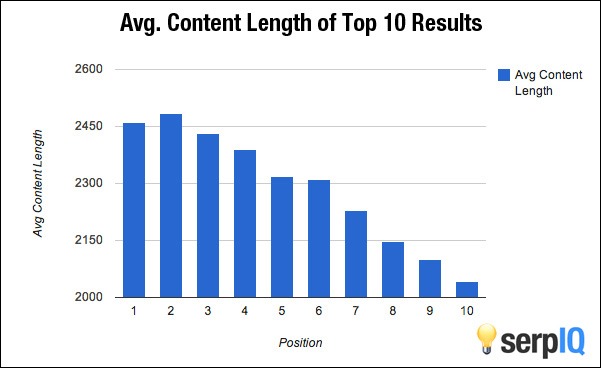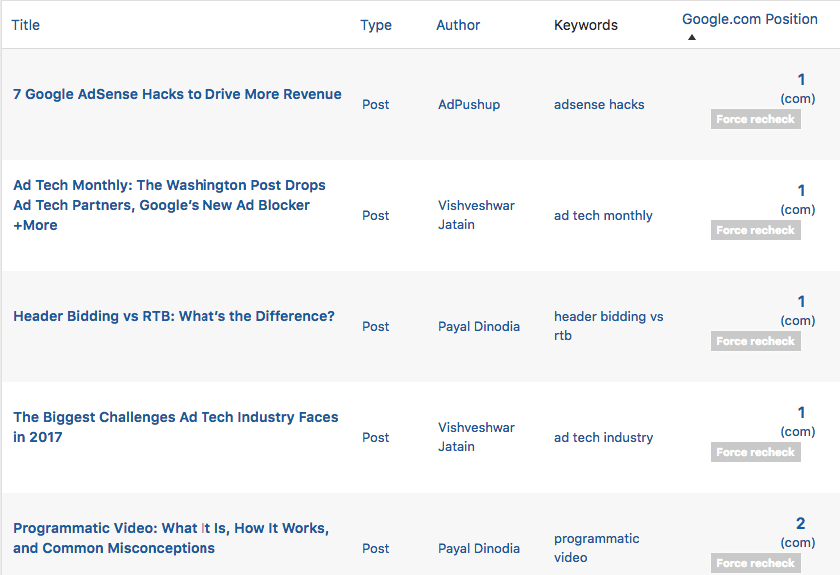A website is nothing if not the traffic that it receives, for everyone from online stores to web publishers, success on the internet is often measured in monthly pageviews.
Traffic is broadly classified under the following categories:
- Direct (when someone types in the URL directly in their browser and lands on a website)
- Paid (traffic acquired from Google AdWords, Facebook advertising, and other paid sources)
- Social (traffic that comes from users sharing content on social media)
- Referral (traffic that comes in from inbound links)
- Organic (traffic that comes in from search engines such as Google, Yahoo, and Bing).
Paid traffic can work for e-commerce stores where the margins are high, so the cost of acquiring a lead is sufficiently covered by a sale, that’s why you see all those ads by Amazon. This doesn’t hold true for publishers however, because ascribing even an estimated value to a lead is much more difficult process.
Therefore, web publishers have to rely mainly on social, referral, and organic traffic for revenue generation. Within those types, organic traffic is far more valuable as a long-term strategy: It’s dependable, predictable, and more sustainable than the other two.
You can’t guess how many social shares your latest post will get, but you can depend on organic traffic to keep delivering for weeks, months, even years.
In most cases, about 80% of traffic that a website receives is organic traffic, this makes it all the more important to have a strategy that takes into account the need to build content assets that are designed to work as magnets for organic traffic.
The entire SEO industry is built upon this idea, while there are a lot of factors that affect your page rank, there are things you can do to improve your chances. Your ultimate goal is to have your content show up in the first page of search results because that’s what the majority of users click on.
If you’re on page three of Google search, it’s almost as good as not being listed.
> Capturing Long Tail Keywords
Long tail keywords are the low-hanging fruits of getting organic traffic. Suppose you run an auto magazine and want to rank for the fastest sports cars, given the existing competition in the space, the chances of you ranking on for that keyword from the get-go are slim to nil.
This is where long tail keywords come in. Sure, ranking for fastest sports cars is mighty hard, but can you try to rank for fastest sports cars under 50K? Suddenly your chances are much better.
Finding good long tail keywords with good search numbers and low competition can be a bit tricky and will take some practice though. One of the places you can start is examining the suggested search results at the bottom of Google’s search results. This is what shows up for this keyword:

This is a good place to start and it gives you some additional ideas to work with. Once you’ve ranked good for a bunch of long tail keywords, getting a higher rank for the main keywords becomes easier as well, because by that point, the search engine has begun associating you as an authority.
One keyword that gets us a lot of organic traffic is ad networks, this didn’t happen overnight obviously, and we’ve covered a lot of long tail keywords related to it over the years, but now when someone searches for just ad networks, our webpage shows up in the first page of search results.

There are free and paid software tools such as Google Search Trends, AdWords Keyword Planner, Raven Tools, Moz, Keywordtool.io, and Long Tail Pro, among many others, that can help you discover, create, and gauge the effectiveness of long tail keywords before you start working on them.
> Content that Works for Organic Traffic
Like with everything else, a certain type of content usually works better for getting organic traffic than other types. The word “evergreen content” is thrown around often to describe this.
So what is it? Here’s an explainer:
Suppose you run an introductory SEO blog. In this case, an article titled “What is SEO?” could be an example of evergreen content, as the definition of the acronym “SEO” isn’t going to change in this context. That definition will always be helpful to industry newbies, and the topic itself will continue to provide enduring value to the blog’s audience over time.
On the other hand, the post topic, “What are the Current SEO Best Practices?” isn’t an example of an evergreen topic, as every single Google algorithm change necessitates a revision in recommended SEO techniques. If this post were published to our basic SEO blog, its value would only persist as long as Google’s recommendations remain consistent, meaning that it will quickly become outdated.
via SEJ
So the term ever evergreen literally points to the fact that the content that’s being produced will not lose its value over time and will continue to be relevant. Here are a few more examples:
- Celebrity gossip that shows up on TMZ and Perez Hilton is not evergreen content
- An article titled “How Big is the Universe?” on Space.com is evergreen content
- Budget coverage by a news website is not evergreen content
- An article on how to invest on HowStuffWorks.com is evergreen content
Before you begin working on something, ask yourself: Will this still be useful to someone one, maybe two years from now? If the answer is yes, you’re in the green.
Tackling the right topics is one part of the puzzle, the missing parts are quality and frequency.
The quality of individual content assets determines their chances of getting a good ranking in search. If you pick the right topic, target a feasible keyword, and create the best, most comprehensive post on it, your effort will be rewarded by both people and search engines—usually one plays into the other.
There’s a lot of debate about word length, but everyone agrees on this: More is better when it comes to attracting organic traffic. Is there a magic number? It’s 2450 words, according to this data by serpIQ.

How often you post also seems to have a significant impact on organic traffic. Every time Google’s search crawlers scan your website, they look for new content, discovering this indicates to the search engine that your site is frequently updated and active—a positive signal.
According to data provided by Hubspot, companies that published 16+ blog posts per month got almost 3.5X more traffic than companies that published between 0 – 4 monthly posts.

> Generating Inbound Links
Google has always kept its search algorithms highly secret, this is why sites likes Search Engine Roundtable, Search Engine Journal, and Moz have been able to build entire businesses about speculating and decoding them.
Two factors affecting search rankings that no one argues about are domain age and number of incoming links a.k.a. backlinks.
Websites that have been around for longer have a higher chance of showing up early in search results, obviously, not much can be done about this except wait.
The other factor is something that you can control, however. According to Google, a higher number of webpages linking to your site means that the content you have is trustworthy and valuable, in other words, you’re an authority on your subject.
The process of generating inbound links for your website is frequently referred to as link-building. There are hundreds of link-building strategies out there, some better than others.
One thing is certain: Finding the right long tail keywords and creating a lot of high-quality content will typically all amount to nothing if you’re unable to get this link juice.
Backlinko has an excellent guide on link-building categorised under eight chapters.
Here are a few ideas:
- Invest in creating high-quality infographics, then pitch them to publications in your niche, most will be happy to provide you a with a backlink if your infographic is relevant to their audience.
- Think and create other types of substantial content assets that can work as link magnets such as eBooks, independent research, presentations, and whitepapers.
- Focus on building a great email list, this way you don’t have to depend on social or paid channels to have an audience for your content, you already have the audience.
- Make sure you’re following the hygiene of search engine optimization, i.e., finding and building upon the right keywords, and making sure the keyword is present in the URL, title, and content.
> Building Search Authority
Let’s be realistic: No matter what you’re covering, unless you have massive funding and a team of hundreds of skilled creators, you’re not going to become an authority in a week, month, even year.
Getting search traffic a long game, it’s a game that pays off well if you play it well, consistently. Google is continuously working on its algorithm to make sure people can’t buck the system by using old hacks such as keyword stuffing or other black hat SEO techniques. So you have to stick with what’s legitimate.
A good rule to follow is that if it’s good for your users, it’s good for search. Instead of trying to growth hack your way into search results, focus on creating the kind of content that does it for you.
Building search authority is about doing things that establish you as the leading source of information on the topics that you cover. Let’s go back to the example of that auto blog and fastest sports cars. If you want to increase your chances of ranking for that keyword, you have to present yourself as an authority on automotive industry to Google.
How do you do that? You can write in-depth articles about the history of the automotive industry, how car engines work, how braking works, different types of suspensions, fastest formula 1 drivers, most expensive luxury cars—anything that will grow your body of work on the topic.
If that seems like a lot of work to capture one keyword, don’t worry, the idea is to increase your credibility for all related keywords. That’s how you can ultimately dominate your market.
> Tracking and Measurement
As they say, if you can’t measure it, you can’t improve it. Luckily for us, everything about search optimization can be tracked, measured and benchmarked.
To start with the most basic thing, you can pull up your organic traffic numbers from Google Analytics by selecting a date range and going to ACQUISITION > All Traffic > Channels. This report will show the percentage of traffic coming in from various channels such as organic, direct, social, referral, etc. See our Beginner’s Guide to Google Analytics for more. Another way to stay on top of this is to sign up with a service like Quill Engage that will send you weekly updates including the most important metrics.
Apart from the traffic that’s coming in, you might also want to measure the traffic potential of a keyword. This can easily be achieved by running the keyword through AdWords Keyword Planner.

Then of course, you might want to keep a tab on where on the search result page you are ranking for a particular keyword. Most search optimization tools and plugins allow you to do this, on this blog, we use Squirrly, which displays rankings for all your keywords on one page.

Last but not the least, you may want to keep a track of the number of backlinks that your website has. If your backlinks are increasing, it means that your search authority is too. WordPress has plugins that can help you track this such as Backlink Checker and there are also paid tools like Moz Open Site Explorer.
Let’s recap what you need to track:
- Monthly organic pageviews
- Number of backlinks to your website
- Search ranking for your keywords
- Estimated traffic for new keywords
Keeping an eye on these numbers will help you understand if your search strategy is working or if it needs some course correction. A lot of things need to come together in order to reap the benefits of the never-ending supply of new traffic that organic search promises. We’ve tried to cover some of them here, but remember, in the search game, nothing beats quality, consistency, and staying power.

Shubham is a digital marketer with rich experience working in the advertisement technology industry. He has vast experience in the programmatic industry, driving business strategy and scaling functions including but not limited to growth and marketing, Operations, process optimization, and Sales.







